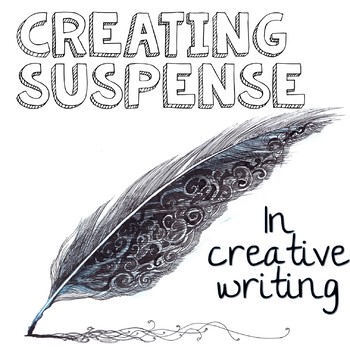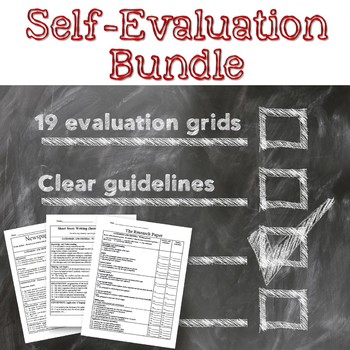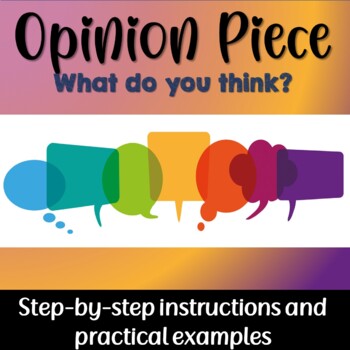Description
***Please note that other than the evaluation and game, the documents are non- editable in a PDF document. An editable version can also be purchased using this link: ***EDITABLE Thematic Poetry Unit
***A digital copy of the student activities in Google Slides is included as well for distance learning.***
The comprehensive poetry unit that teachers, as well as students, can enjoy. I want to demystify poetry, and I make it my goal for students to enjoy the reading and studying of poetry.
At the beginning of every poetry unit, I ask my students this question, “How do you feel about poetry?” My heart always sinks when most admit to disliking it. I make students this promise, and now I am making you this promise, with this unit, I might not convert you into a poetry lover, but I promise that you won’t hate it. (We need realistic expectations.) This unit includes a variety of poetry genres and activities to help students understand that poetry is not about finding the correct answer but appreciating someone else’s point of view on a subject (even if students don’t quite understand or like it). In short, this unit teaches students how to approach, think, and write about poetry. Each lesson focuses on an element of poetry that will further students’ ability to analyze, to read between the lines, and to become independent learners.
The unit includes:
❒Student worksheets and poems
❒15 complete lessons (with an introduction, transitions and activities, and conclusion). The lessons also include the learning goals for students.
❒A comprehensive answer key for all worksheets, annotations to all poems, examples of paragraphs for students.
❒A final unit test (PPT – editable) with the answer key. Includes student success criteria and an evaluation grid. The poem on the test is Paul Laurence Dunbar’s “We Wear the Masks.” For copyright purposes, the poem cannot be published on the test. However, I have left room on the editable test for the teacher to insert a copy of the poem.
❒A comment sheet for easy and meaningful retroaction on students’ test is also included. This will facilitate the marking process. (editable)
❒A Jeopardy game to review figurative language (PPT)
***All pages are editable in a PowerPoint document. The background has been secured to ensure proper formatting.
Summary of lessons included:
❒ Lesson 1: Introduction to poetry – Includes a journal prompt, notes on how to approach poetry, an activity to familiarize students with poetry further, and a review on figurative language (with notes.)
❒ Lesson 2: Figurative Language Review – The lesson includes a journal prompt (a creative poetry activity), students will play Figurative Language Jeopardy (PPT) to review figurative language.
❒ Lesson 3: Introduction to analysis – The lesson includes a journal prompt, students will learn to analyze poetry using Walt Whitman’s “When I heard the Learn’d Astronomer” and “The Quiet Patient Spider.”
❒ Lesson 4: Fun with metaphors – This lesson includes a journal prompt, a “Fun with Metaphors” worksheet to help students further understand metaphors, students will analyze William Blake’s “A Poison Tree,” and will complete the worksheet on the poem.
❒ Lesson 5: Fun with allusions – This lesson begins with a journal prompt, a “Fun with Allusions” worksheet, students analyze Simon and Garfunkel’s song “The Sound of Silence.” (poem not included) However, a blank (editable) page is included in the document to paste the lyrics from the internet. This will help you create a more cohesive looking unit.
❒ Lesson 6: Tone and Attitude – Students will do a video (or song version) comparison analysis by completing the “Video Comparison” worksheet.
❒ Lesson 7: Symbolism – Students will complete the “Fun with Idioms” worksheet, will analyze Robert Frost’s poems “The Road not Taken” and “Nothing Gold Can Stay,” they will complete the worksheets for both poems, and learn how to write a PEEL paragraph using the notes provided.
❒ Lesson 8: Writing about poetry – This is a writing clinic of sorts where students will learn to identify strong topic sentences and well-developed paragraphs. An example of a well-developed paragraph is included.
❒ Lesson 9: Historical allusions: This lesson begins with a journal prompt, students will analyze Cara Dillon’s song “There were Roses” and complete the accompanying worksheet. (Please note that this poem is not included.)
❒ Lesson 10: Thematic connections – Students will work in collaborative groups on the “Thematic Connections” worksheet, which compares two of the poems studied in the unit. *An optional activity is included: Students will write a comparative paragraph comparing one similar theme in both poems. An example of a paragraph is included.
❒ Lesson 11: Allusions and analysis – this lesson begins with a journal prompt, The study of Plato’s “The Allegory of the Cave” by watching a Ted Talk, analyzing Mumford and Son’s song “The Cave,” and completing the worksheet. (Please note that the song lyrics are not included.)
❒ Lesson 12: Connections – students will learn to make important connections in poetry by completing the worksheets of the “Battle of the Pronouns” and “Cave vs. Cave” to further develop the themes in Mumford and Son’s song “The Cave.”
❒ Lesson 13: Theme review – Students will refine and review how to develop a theme in a poem (which applies to any work of literature) by completing the worksheet “The Cave – Themes and Meanings,” students will then write a theme in paragraph form.
❒ Lesson 14: Evaluation (test) – editable with answer key and comment sheet to facilitate marking
Check out the free sample lesson: Free Poetry Lesson on Metaphors
You may also be interested in the following products:
❒Free Thesis Writing Activity
❒Poetry Lesson: Analyzing Poetry
❒Poetry Unit for Senior Students
❒Teaching the Essay Package
❒The Yellow Wallpaper No Prep Mini-Unit
❒Much Ado About Nothing No Prep Unit
❒Brave New World Student Notebook
❒Essay Writing Flip Book
❒Frankenstein Bundle
❒Hamlet Bundle
It’s teaching made easy!
Total Pages
78 pages and 28 slides
Answer Key
Included with rubric
Teaching Duration
2 Weeks
















